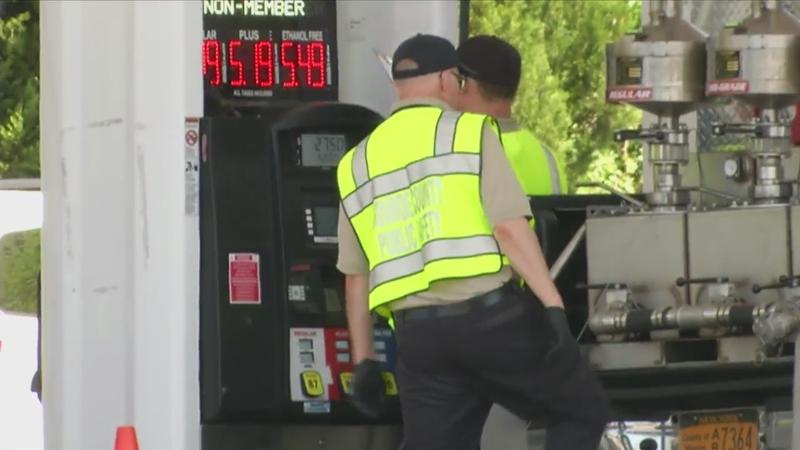In-Depth: Gas pump inspections
[anvplayer video=”5110007″ station=”998131″]
ROCHESTER, N.Y. (WHEC) — Gas prices are sky-high right now. The average price per gallon in the Rochester area is $4.84 per gallon. That’s up from $4.61 just one week ago and $4.28 this time last month. When you’re paying those types of prices, you want to make sure you’re getting every penny’s worth.
Inspectors for the Monroe County Department of Weights and Measures are tasked with making sure drivers are not being cheated.
“We go to each station in Monroe County at least once a year,” explained Senior Inspector Matthew Knight.
That’s 227 stations and 4,604 pumps.
The inspectors start with the basics.

[News10NBC]
“We make sure the price topper signs on top of the pumps, match up with what they’re charging and what’s indicated on the dispenser itself,” Knight says.
That has been a bit of an issue lately. The big gas retailers for example, are able to push price changes directly to the pumps from their corporate offices but sometimes the attendants on the ground aren’t as quick at changing the toppers. It should be done at the same time.
When it comes to the gasoline itself, “we just make sure a gallon is a gallon to make sure the consumer and the store, everything’s equitable and everyone’s getting what they pay for,” Knight explained.
To do that, the inspectors have a specialized truck for measuring.
One gallon of gas is 231 cubic inches, each pump has to be within 1.2 cubic inches to be in compliance.
Jennifer Lewke (News10NBC) – If they are shorting the customer, then what happens?
Matthew Knight – If it’s shorting below tolerance, at that point, we do what we call a red tag and we actually shut the pump down and they have to notify us. They can’t use it until they get it fixed.
But there’s good news for drivers.
“The way the pumps are designed to fail, is when they start failing they actually start giving away gas,” Knight explained.
But not always. While News10NBC was out with the inspectors, they had to shut a pump down.
“When we checked the seals underneath, we also checked the piping underneath to see if there’s any signs of any leaks," Knight said, “and you’ll see if there’s a leak and they found a leak on one of the grades."
A red tagged pump can’t be put back into service until it’s fixed and re-inspected and to make sure pumps haven’t been adjusted after that.
“We also have to check the security seals that show if they’ve been tampered with in terms of calibration, any time they break their seals that we install on them after we test them, they have to notify us,” Knight said.
Stations that are repeatedly out of compliance or that break the seals without notifying the county can be fined but the department said because the inspection process is so aggressive, that has not been necessary over the last few years.
It’s not just the amount of gas you’re getting that’s being inspected, the quality is investigated too.
“We’ll do what we call stick the tank, actually take a stick with water paste on it and make sure there’s no water in the tank and then also, we may, depending on how that readily goes, actually take a sample to send to a lab,” Knight explained.
That’s why they say it’s important for drivers to file a complaint if they notice an issue,
“Make sure you have the name of the station, the station location, what time of day it was, what pump you’re on and even what grade you were getting,” Knight recommended.
For more information on how to do that, click here.